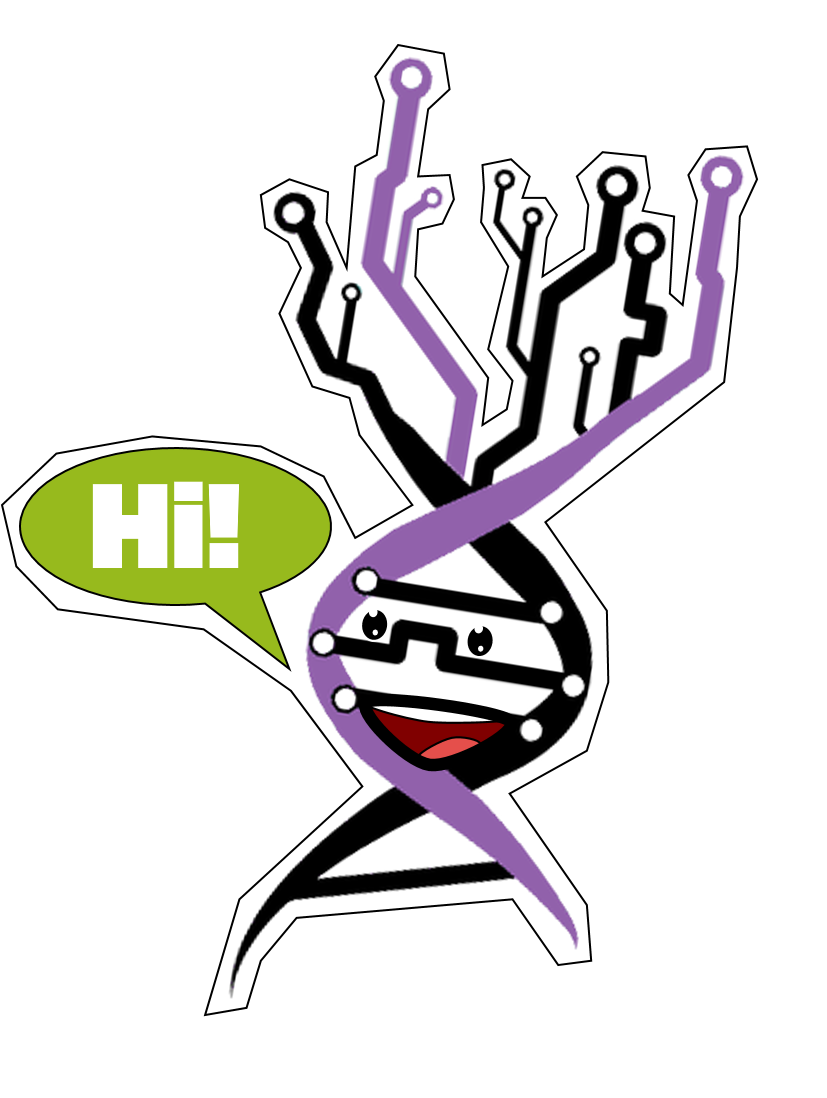“What is life?”: Open quantum systems approach
Andrei Khrennikov
Linnaeus University, International Center for Mathematical Modeling in Physics and Cognitive Sciences, Växjö, SE-351 95, Sweden
Development of hybrid and optimized deep learning classifiers for speech recognition in tracheostomy patients: a case study
Prof. Themis Exarchos1
1Department of Informatics, Ionian University, Ioannou Theotoki 72, Corfu, Greece
A Similarity-based Normative Framework for Bio-plausible Neural Nets
Anirvan Sengupta1,2
1Flatiron Institute, 162 5th Ave, New York, NY 10010, USA
2Department of Physics and Astronomy, Rutgers University, 136 Frelinghuysen Rd, Piscataway, NJ 08854, USA
Pangenomic Alignment: Strings plus Graphs
Travis Gagie
Faculty of Computer Science, Dalhousie University, 6050 University Avenue, Halifax, Nova Scotia, B3H 1W5, Canada
Circular Codes in the Genetic Information
Elena Fimmel1 and Lutz Strüngmann1
1Mannheim University of Applied Sciences, Paul-Wittsack Str. 10, 68163 Mannheim, Germany
Complexity driven evolution of Alternative splicing.
Vladimir Babenko1* and Timophey Boltunov1
1Institute of Cytology and Genetics, Novosibirisk, 640090, Russia
Advancing Genomics with OrthoDB, BUSCO, and the LEM Framework
EV Kriventseva*, M Manni, M Seppey, F Tegenfeldt, M Berkeley, D Kuznetsov, EM Zdobnov
Department of Genetic Medicine and Development, University of Geneva Medical School, Swiss Institute of Bioinformatics, rue Michel-Servet 1, 1211 Geneva, Switzerland.
Computational tools and repositories for precision therapeutics in the post-genomic era
George P. Patrinos1,2,3
1Professor; University of Patras School of Health Sciences, Department of Pharmacy, Patras, Greece
2Adjunct Full Professor; United Arab Emirates University, College of Medicine and Health Sciences, Department of Genetics and Genomics, Al-Ain, UAE
3Adjunct Faculty; Erasmus MC, Faculty of Medicine and Health Sciences, Department of Pathology, Clinical Bioinformatics Unit, Rotterdam, the Netherlands.
From multifunctionality to polypathogenicity with intrinsic disorder
Vladimir N. Uversky1
1Department of Molecular Medicine and USF Health Byrd Alzheimer’s Center and Research Institute, University of South Florida, Tampa, Florida 33612, USA
Exploring the impact of rare Copy Number Variants on miRNA genes in CAKUT: Insights from integrated bioinformatic analysis and experimental validation
Ivan Jovanović1
1Institute of nuclear sciences ’’Vinča’’, National institite of the Republic of Serbia, Laboratory for radiobiology and molecular genetics, Mike Petrovića Alasa 12-14, 11001 Vinča, Beograd, Srbija
Stereo-seq: Large Field of View-Spatially Resolved Transcriptomics at Nanoscale Resolution
Javier Batista Perez1
1BGI Research Foundation Latvia, Lidostas Parks, Marupe, Marupes novads, LV-2167, Latvia
An integrated platform for genome assembly, comparative genomics and management of genomic variation databases
Jorge Duitama1
1Systems and Computing Engineering Department. Universidad de los Andes, Cra 1 Este 19 A 40, Bogotá, Colombia
Inverting convolutional neural networks for super-resolution identification of regime changes in epidemiological time series
Jose M. G. Vilar1,2
1Biofisika Institute (CSIC, UPV/EHU), University of the Basque Country (UPV/EHU), P.O. Box 644, 48080 Bilbao, Spain
2IKERBASQUE, Basque Foundation for Science, 48011 Bilbao, Spain
Stochastic variation of intracellular amounts of restriction-modification enzymes allows phages to overcome the RM defence
Konstantin Severinov1
1Waksman Institute for microbiology, Rutgers, The State University of New Jersey, Piscataway, NJ 08854
Bioinformatics and evolution of non-model organisms
Mikhail S. Gelfand1,2
1Skolkovo Institute of Science and Technology, Moscow, Russia
2A.A.Kharkevich Institute for Information Transmission Problems, Moscow, Russia
Some Applications of Graph-Based Machine Learning Methods on Biological Data
Mladen Nikolić1
1Faculty of Mathematics, University of Belgrade, Studentski trg 16, 11000 Belgrade, Serbia
An agnostic analysis of the human AlphaFold2 proteome using local protein conformations
Alexandre G. de Brevern1*
1 DSIMB Bioinformatics Team, INSERM UMR_S 1134, BIGR, Université Paris Cité and Université de la Réunion, 75014 Paris, France
Omics Data Fusion for Understanding Molecular Complexity Enabling Precision Medicine
Nataša Pržulj1,2,3
1Barcelona Supercomputing Center (BSC), Barcelona 08034, Spain
2Department of Computer Science, University College London, London WC1E 6BT, UK
3ICREA, Pg. Lluís Companys 23, 08010 Barcelona, Spain
Using AI/ML to transform molecular biology databases
Alex Bateman1
1EMBL-EBI, Wellcome Genome Campus, Hinxton, Cambridgeshire, CB10 1SD, UK
Computational bioengineering for heart disease
Nenad Filipovic1*, Themis Exarchos2, and Djordje Jakovljevic3
1Faculty of Engineering, University of Kragujevac, 34000 Kragujevac, Serbia
2Deparment.of Informatics, Ionian University, Corfu, Greece
3Centre for Health and Life Sciences, Coventry University, United Kingdom
Uncovering resistance to microtubule targeting drugs
Mattia Pavani1, Elena Chiroli1, Paolo Bonaiuti, and Andrea Ciliberto*1,2
1IFOM, The AIRC Institute of Molecular Oncology, via Adamello 16, 20139, Milan, Italy
2Pazmany Peter Catholic University, Faculty of Information Technology and Bionics, 1083, Budapest, Hungary
Exploiting the linear organisation of omics network embedding spaces
Noël Malod-Dognin1*, Alexandros Xenos1, Sergio Doria Belenguer1, and Nataša Pržulj1,2,3
1Barcelona Supercomputing Center (BSC), Barcelona 08034, Spain
2Department of Computer Science, University College London, London WC1E 6BT, UK
3ICREA, Pg. Lluís Companys 23, 08010 Barcelona, Spain
Can we use biobanks to study infectious diseases?
Andrea Gelemanović1
1Mediterranean Institute for Life Sciences, Meštrovićevo šetalište 45, Split, Croatia
To be folded, to be unfolded or to be aggregated with important functions: application of the directed coaggregation mechanism to combat bacterial communities
O.V. Galzitskaya1*, S.Yu. Grishin1, A.V. Glyakina1, M.V. Slizen1, A.V. Panfilov1, P.A. Domnin2,3, A.P. Kochetov4,5, A.A. Surin6, S.V. Kravchenko7, A.K. Surin5, S.A. Ermolaeva2
1Institute of Protein Research, Russian Academy of Sciences, 142290 Pushchino, Russia
2Gamaleya Research Centre of Epidemiology and Microbiology, 123098 Moscow, Russia
3Biology Faculty, Lomonosov Moscow State University, 119991 Moscow, Russia
4Pushchino State Institute of Natural Sciences, Pushchino, Moscow Region 142290, Russia
5The Branch of the Institute of Bioorganic Chemistry, Pushchino, Russia
6Faculty of Applied math, MIREA – Russian Technological University, Moscow, 119454 Russia
7Institute of Environmental and Agricultural Biology (X-BIO), Tyumen State University, 625003 Tyumen, Russia




